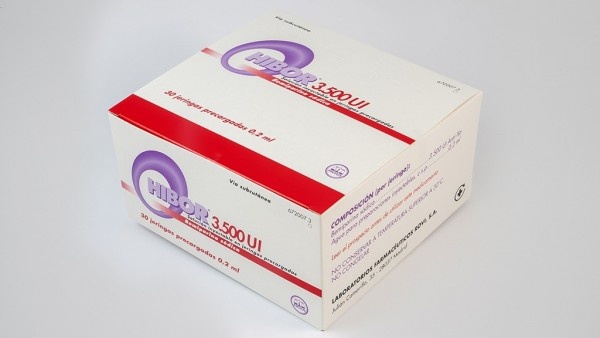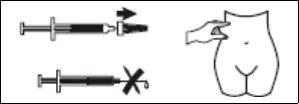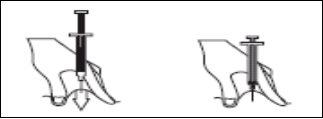

PHIVOR 3,500 IU Anti-Xa / 0.2 mL PRE-FILLED SYRINGES

Ask a doctor about a prescription for PHIVOR 3,500 IU Anti-Xa / 0.2 mL PRE-FILLED SYRINGES

How to use PHIVOR 3,500 IU Anti-Xa / 0.2 mL PRE-FILLED SYRINGES
Introduction
Package Leaflet: Information for the User
Phivor3,500 UI anti Xa/0.2 ml
injectable solution in pre-filled syringes
Sodium bemiparin
Read all of this leaflet carefully before you start using this medicine because it contains important information for you.
- Keep this leaflet, you may need to read it again.
- If you have any further questions, ask your doctor or pharmacist.
- This medicine has been prescribed for you only. Do not pass it on to others. It may harm them, even if their signs of illness are the same as yours.
- If you experience any side effects, talk to your doctor or pharmacist. This includes any possible side effects not listed in this leaflet. See section 4.
In this leaflet:
- What is Phivor and what is it used for
- What you need to know before you use Phivor
- How to use Phivor
- Possible side effects
- Storage of Phivor
- Contents of the pack and other information
1. What is Phivor and what is it used for
The active substance of Phivor is sodium bemiparin, which belongs to a group of medicines called anticoagulants. These medicines help prevent blood from clotting in the veins.
Phivor 3,500 UI is used to: prevent blood clots (e.g. in the veins of the legs and/or lungs) that may appear in patients undergoing orthopedic surgery (hip, knee, or other bone operations) or in patients not undergoing surgical intervention but who have a moderate risk of suffering clots.
It is also used to prevent clot formation in the extracorporeal circulation circuit during hemodialysis.
2. What you need to know before you use Phivor
Do not use Phivor
- If you are allergic to sodium bemiparin, heparin, or a similar product (such as enoxaparin, dalteparin, nadroparin) or to any of the other components of this medicine (listed in section 6).
- If you have had an allergic reaction after being treated with a medicine that contains heparin.
- If you are allergic to any substance derived from pigs.
- If you have Heparin-Induced Thrombocytopenia (HIT), a disease that causes a significant decrease in your platelet count (or, as a result of HIT, you suffer from another disease called Disseminated Intravascular Coagulation (DIC), in which your platelets would clot if you use Phivor).
- If you have a disease called endocarditis (inflammation of the heart walls and heart valves).
- If you have any type of disorder that causes you to bleed excessively.
- If you have a severe liver and/or pancreatic function disorder.
- If you have any type of damage or injury to your internal organs that could imply a high risk of internal bleeding (e.g. active stomach ulcers, cerebral aneurysms [inflammation of the walls of the brain arteries] or brain tumors).
- If you have had a cerebral hemorrhage.
- If you have had or have a lesion or are going to be operated on in the brain, spinal cord, eyes, and/or ears.
- If you are using Phivor, you should not be given epidural or spinal anesthesia (an anesthetic injected into the spinal cord) because it could be dangerous. Therefore, make sure your doctor knows you are using Phivor before any operation.
Warnings and precautions
Talk to your doctor or pharmacist before you start using Phivor.
- If you are sick with liver disease.
- If you are sick with kidney disease. Your doctor may consider special monitoring. In the case of severe kidney disease, your doctor may consider a dose adjustment necessary.
- If your blood pressure is high and/or difficult to control.
- If you have ever had a stomach ulcer that is no longer active.
- If you have thrombocytopenia, a disease in which there are fewer platelets in the blood than normal, which causes bruising and easy bleeding.
- If you have kidney and/or bladder stones.
- If you have any type of disease that causes you to bleed easily.
- If you have eye problems due to blood vessel problems.
- If you have diabetes.
- If your test results have shown that you have high potassium levels in your blood.
- Make sure your doctor knows you are using Phivor if you are going to have a lumbar puncture (a needle stick in the lower back for testing).
Using Phivor with other medicines
Talk to your doctor if you think you may be using:
- Any medicine that is injected into the muscle, because these injections should be avoided while you are being treated with Phivor.
- Other anticoagulants such as warfarin and/or acenocoumarol (vitamin K antagonists) to treat and/or prevent blood clots.
- Non-steroidal anti-inflammatory drugs, such as ibuprofen, for example, for arthritis.
- Corticosteroids such as prednisolone, to treat inflammatory diseases, such as arthritis.
- Platelet inhibitors, such as aspirin, ticlopidine, or clopidogrel, to prevent blood clots.
- Medicines that may increase potassium levels in the blood, such as some diuretics and antihypertensives (used to lower blood pressure).
- Medicines to increase blood volume, such as dextran.
- An injectable medicine for heart problems called nitroglycerin.
Tell your doctor or pharmacist if you are using, have recently used, or may need to use any other medicine.
Special tests you may need
- Some patients may need to have their platelet count controlled. Your doctor will decide if it is necessary and when (e.g. before starting treatment, on the first day of treatment, then every 3 or 4 days until the end of treatment).
- If you have certain diseases (diabetes, kidney disease) or if you are taking medicines to prevent potassium loss, your doctor may control your potassium levels in your blood.
Pregnancy and breastfeeding
If you are pregnant or breastfeeding, think you may be pregnant, or plan to become pregnant, consult your doctor or pharmacist before using this medicine.
Driving and using machines
Phivor does not affect your ability to drive or use machines.
3. How to use Phivor
Follow your doctor's instructions for administering this medicine exactly. If you are in doubt, consult your doctor or pharmacist again.
The recommended dose is:
Prevention of thromboembolic disease in patients undergoing orthopedic surgery:
- Phivor 3,500 UI is usually administered by a doctor or nurse via the subcutaneous route (injected under the skin, usually in a skin fold of the abdomen or upper hip). Before or after the intervention, a dose of the product (the contents of a syringe) will be administered. On subsequent days, a dose (the contents of a syringe) will be administered once a day. Your doctor will tell you how long you should be administered this medicine.
Prevention of coagulation in the extracorporeal circulation circuit during hemodialysis:
- In patients undergoing hemodialysis sessions, Phivor 3,500 UI is usually administered by injecting a single dose in the form of a bolus (the contents of a syringe) into the arterial line of the dialysis circuit.
Phivor is injected under the skin, usually in a skin fold on one side of the waist (abdomen) or in the upper hip. Normally, your doctor or nurse will give you the injection in the hospital. You may need to continue receiving Phivor when you return home.
- This medicine should never be injected into a muscle or mixed with any other injection.
- It is usually administered once a day.
- Your doctor will tell you how long you should be administered this medicine (usually 7-10 days).
- If your doctor has told you that you can inject this medicine yourself, carefully follow your doctor's instructions (see section "How do I inject Phivor?").
Elderly(65 years and over)
They usually receive the same dose as other adult patients. If you have liver problems, please inform your doctor, it is possible that they will decide to monitor you very closely.
If you have kidney problems, please inform your doctor, who will monitor you very closely. In the case of severe kidney disease, your doctor may consider a dose adjustment necessary.
Use in children(under 18 years)
Phivor is not recommended for children.
How do I inject Phivor?
Phivor should never be injected into a muscle because it could cause bleeding inside the muscle. Before you give yourself your first injection, you should receive instructions on the correct use of this medicine and the correct self-injection technique. These instructions should be given by a doctor or another qualified healthcare professional.
You should follow these steps:
- Wash your hands well and sit or lie down in a comfortable position.
- Choose a waist area that is at least 5 centimeters from the navel and any scar or bruise, and clean the skin of that area well.
- Use different sites for the injection each day, for example, first on the left side and the next time on the right.
- Remove the cap that covers the needle of the Phivor syringe.
- To keep the needle sterile, make sure it does not touch anything.
- The pre-filled syringe is ready to use.
- Before the injection, do not push the plunger to eliminate air bubbles, because you may lose medicine.

- Hold the syringe with one hand and with the other, using your index and thumb fingers, hold a pinch of the cleaned skin area to form a fold.
- Insert the entire needle into the skin fold, keeping the syringe as upright as possible over the body surface, at a 90-degree angle.
- Push the plunger, making sure you keep the skin fold in the same position until the plunger is all the way down.

- Remove the syringe from the injection site, keeping your finger on the plunger rod and the syringe upright. Release the skin fold.
- Do not rub the skin where the injection was given. This will help prevent bruising.
- Do not try to put the cap back on the syringe. Immediately discard the syringe by throwing it into the nearest sharps container (needle first), close the container tightly with the lid, and keep it out of the reach of children.
- If you think the effect is too strong (e.g. because you experience unexpected bleeding) or too weak (e.g. because the dose does not seem to work), tell your doctor or pharmacist.
In some package sizes, the pre-filled syringe may be combined with a safety device that will be activated after the injection to reduce the risk of needlestick injuries.
For syringes with a safety device: Orient the needle away from you and anyone else present, activate the safety system by firmly pressing on the plunger rod. The protective sleeve will automatically cover the needle and an audible click will confirm the activation of the device.
Immediately discard the syringe by throwing it into the nearest sharps container (needle inside), close the container tightly with the lid, and keep it out of the reach of children.
If you use more Phivor than you should
You may experience some type of bleeding. In this case, consult your doctor or go to the emergency department of the nearest hospital, accompanied by this leaflet.
In case of overdose or accidental administration, consult the Toxicology Information Service. Telephone 91 562 04 20.
If you forget to use Phivor
Do not take a double dose to make up for the forgotten dose. Consult your doctor as soon as possible to find out what to do in these cases.
If you stop treatment with Phivor
Always consult your doctor before stopping this medicine.
If you have any other questions about the use of this medicine, ask your doctor or pharmacist.
4. Possible side effects
Like all medicines, this medicine can cause side effects, although not everybody gets them.
Stop using Phivor and consult your doctor or nurse (or go to the emergency department of the nearest hospital) immediately if you experience any of the following side effects:
Common(may affect up to 1 in 10 people):
- Unusual or unexpected bleeding, for example, blood in the urine or stool, which may cause hemorrhagic anemia.
Rare(may affect up to 1 in 1,000 people):
- Severe decrease in platelet count (type II thrombocytopenia), which can lead to bruising, bleeding gums, nose, and mouth, and rashes.
- Skin damage (necrosis) at the injection sites.
- Intra-spinal hematomas after spinal or lumbar anesthesia (back pain, numbness, and loss of strength or sensation in the legs, incontinence of the intestine or bladder). These hematomas can cause different degrees of disability, including prolonged or permanent paralysis.
- Severe allergic reactions (fever, shivering, difficulty breathing, swelling of the vocal cords, dizziness, sweating, hives, rash, itching, low blood pressure, flushing, redness, fainting, bronchial constriction, laryngeal edema).
Other side effects:
Very common (affects more than 1 in 10 people):
- Bruises, skin spots, itching, and some pain in the areas where the medicine was injected.
Common (may affect up to 1 in 100 people):
- A slight and transient increase in certain liver enzymes (transaminases) in the blood, which may appear in blood tests.
Uncommon (may affect up to 1 in 1,000 people):
- Mild allergic reactions on the skin (rash, skin rash, hives, itching, urticaria).
- Slight and transient decrease in platelet count (type I thrombocytopenia), which may appear in blood tests.
Frequency not known (cannot be estimated from the available data):
- Hyperkalemia (elevated potassium levels in the blood).
- Bone fragility (osteoporosis) associated with prolonged treatment with heparin.
Reporting of side effects
If you experience any side effects, talk to your doctor or pharmacist. This includes any possible side effects not listed in this leaflet. You can also report side effects directly through the Spanish Pharmacovigilance System for Human Use Medicines: https://www.notificaRAM.es. By reporting side effects, you can help provide more information on the safety of this medicine.
5. Storage of Phivor
Keep this medicine out of the sight and reach of children.
Do not store above 30°C. Do not freeze.
Do not use this medicine if you notice:
- The protective packaging is open.
- The protective packaging is damaged.
- The medicine contained in the syringe is cloudy.
- Small particles in the medicine.
Once the blister pack containing the syringe is opened, the medicine should be used immediately.
Expiration date:
Do not use this medicine after the expiration date stated on the packaging.
The expiration date is the last day of the month indicated.
Disposal:
This medicine is presented in single-use syringes.
Dispose of used syringes in a sharps container.
Do not store them after use.
Medicines should not be disposed of via wastewater or household waste. Ask your pharmacist how to dispose of the packaging and medicines you no longer need. This will help protect the environment.
6. Packaging Content and Additional Information
Phivor Composition
The active ingredient is: Sodium Bemiparin 3,500 IU
The other components are: Water for injectables.
Product Appearance and Packaging Content
The medication contained in the syringes is a clear, colorless or slightly yellowish solution, without visible particles.
Phivor 3,500 IU is available in boxes of 2, 10, 30, and 100 pre-filled syringes. Each syringe contains 0.2 ml of solution. Each 0.2 ml syringe provides a dose of sodium bemiparin of 3,500 IU.
Not all packaging sizes may be marketed.
Marketing Authorization Holder and Manufacturer
Marketing Authorization Holder
GINELADIUS, S.L.
C/ Rufino González 50, 28037 Madrid - Spain
Manufacturer
ROVI Pharma Industrial Services, S.A.
C/ Julián Camarillo, 35
28037 MADRID
LABORATORIOS FARMACÉUTICOS ROVI, S.A.
C/ Julián Camarillo, 35
28037 MADRID
This medication is authorized in the member states of the European Economic Area under the following names:
Ivor:Austria, Greece, Italy, Portugal
Zibor:Czech Republic, Estonia, Hungary, Ireland, Latvia, Lithuania, Poland, Slovakia, Slovenia, United Kingdom.
Phivor:Spain
Date of the last revision of this prospectus: 05/2023
Detailed information on this medication is available on the website of the Spanish Agency for Medicines and Health Products (AEMPS) http://www.aemps.gob.es/
- Country of registration
- Active substance
- Prescription requiredYes
- Manufacturer
- This information is for reference only and does not constitute medical advice. Always consult a licensed doctor before taking any medication. Oladoctor is not responsible for medical decisions based on this content.
- Alternatives to PHIVOR 3,500 IU Anti-Xa / 0.2 mL PRE-FILLED SYRINGESDosage form: INJECTABLE, 10000/IUActive substance: bemiparinManufacturer: Laboratorios Farmaceuticos Rovi S.A.Prescription requiredDosage form: INJECTABLE, 12,500 IUActive substance: bemiparinManufacturer: Laboratorios Farmaceuticos Rovi S.A.Prescription requiredDosage form: INJECTABLE, 2500 IUActive substance: bemiparinManufacturer: Laboratorios Farmaceuticos Rovi S.A.Prescription required
Alternatives to PHIVOR 3,500 IU Anti-Xa / 0.2 mL PRE-FILLED SYRINGES in other countries
The best alternatives with the same active ingredient and therapeutic effect.
Alternative to PHIVOR 3,500 IU Anti-Xa / 0.2 mL PRE-FILLED SYRINGES in Polónia
Alternative to PHIVOR 3,500 IU Anti-Xa / 0.2 mL PRE-FILLED SYRINGES in Ukraine
Online doctors for PHIVOR 3,500 IU Anti-Xa / 0.2 mL PRE-FILLED SYRINGES
Discuss dosage, side effects, interactions, contraindications, and prescription renewal for PHIVOR 3,500 IU Anti-Xa / 0.2 mL PRE-FILLED SYRINGES – subject to medical assessment and local rules.














